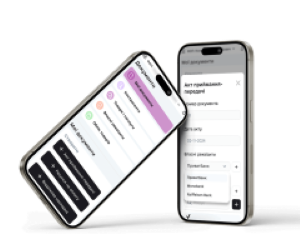The choice of taxation system is one of the key issues that an entrepreneur addresses when registering a sole proprietorship. Understanding which system — general or simplified — is better suited for specific business conditions will help a sole proprietorship optimize costs, prepare proper reporting, and avoid problems with the tax authorities.
In this article, we will consider what a sole proprietorship should consider when choosing between the general and simplified taxation systems.
What influences the choice of taxation system?
To choose the right taxation system, an entrepreneur should consider the following factors:
![]()
- planned annual business volume
- estimated level of expenses;
- type of activity — sale of goods, provision of services, etc;
- number of employees, etc.
Ukrainian legislation provides for two taxation systems: general and simplified. Let us consider the features of each of them.
General taxation system
A sole proprietorship under the general taxation system pays all taxes stipulated by the current legislation. They can get a job in any industry, earn any amount of income, and hire any number of employees.
In the general system, taxes are charged on net profit, not on total income. The types and amount of taxes are defined in Art. 177 of the Tax Code of Ukraine. In 2025, a sole proprietor under the general taxation system will pay:
- personal income tax (PIT) — 18% of the amount of income;
- unified social contribution (USC) — from 22% to 200 minimum wages (UAH 1,760 – UAH 160,000 per month)
- military tax — 5% of the income.
If an individual entrepreneur has employees, he or she pays taxes for them as well. If a sole proprietor voluntarily registers as a VAT payer or his annual income exceeds UAH 1 million, he additionally pays value added tax.
Simplified taxation system
Simplified taxation system is designed for small businesses. It aims to reduce the tax burden and stimulate the development of small businesses. Individual entrepreneurs under the simplified taxation system pay the Single Tax.
There are four taxation groups within the simplified taxation system. Each of them has separate tax rates and business requirements. In particular, restrictions on the types of business activities for sole proprietors of groups 1 – 3 are set out in Art. 291 of the Tax Code of Ukraine.
Sole proprietors under the simplified taxation system are not allowed to make payments in the form of goods — only in monetary form (cash or non-cash).
Let’s take a closer look at the specifics of tax calculation for each group of the simplified taxation system.
![]()
Group 1
This group is chosen by sole proprietors who sell goods at retail in markets or provide services listed in clause 291.7 of Art. 201 of the Tax Code of Ukraine.
Sole proprietors of Group 1 do not hire employees, and their annual income must not exceed 167 minimum wages (in 2025, this amount is UAH 1,336,000).
The single tax rate for sole proprietors of Group 1 is set by village, town or city councils depending on the type of business activity. The rate per month should not exceed 10% of the subsistence minimum (in 2025 — UAH 302.80). The amount of the single tax does not change during the year.
In 2025, a sole proprietor of Group 1 pays:
- single tax — up to 10% of the subsistence minimum (UAH 302.80 per month);
- unified social contribution — 22% of the minimum wage (UAH 1760 per month);
- military tax — 10% of the minimum wage (UAH 800 per month).
![]()
Group 2
Group 2 sole proprietors can produce and sell goods, provide services to the public and other sole proprietors, and engage in the hotel and restaurant business. They can hire up to 10 employees at a time. The annual income must not exceed 834 minimum wages (in 2025 — UAH 6,672,000).
In 2025, a sole proprietor of Group 2 pays:
- single tax — up to 20% of the minimum wage (UAH 1600 per month);
- unified social contribution — 22% of the minimum wage (UAH 1760 per month);
- military tax — 10% of the minimum wage (UAH 800 per month).
![]()
Group 3
This is the most popular group of taxation among sole proprietors on the simplified taxation system. It is used for all types of activities, except for those for which only the general system is applied.
Sole proprietors of Group 3 can work with both residents and non-residents of Ukraine. They can hire an unlimited number of employees. The annual income for them is up to 1167 minimum wages (in 2025 — UAH 9,336,000).
In 2025, a sole proprietor of group 3 pays:
- single tax — 3% of the amount of income for VAT payers, 5% — if the sole proprietor does not pay VAT;
- unified social contribution — 22% of the minimum wage (UAH 1760 per month);
- military tax — 1% of the income.
![]()
Group 4
This group was created for sole proprietors who run farms. According to Art. 291.4 of the Tax Code of Ukraine, sole proprietors of Group 4 must:
- exclusively grow, fatten agricultural products, collect, catch and process, and sell their own products;
- conduct business activities at the place of tax registration (except for supply);
- not to hire employees — only family members of the sole proprietor can be members of the farm;
- total area of land or water must be between 0.5 and 20 hectares.
The single tax rate for sole proprietors of Group 4 depends on the land they use. The annual tax burden is distributed across the quarters as follows: 10%, 10%, 50%, and 30%, respectively.
In 2025, a sole proprietor of Group 4 pays:
- single tax — depending on the category of land;
- unified social contribution — 22% of the minimum wage (UAH 1760 per month);
- military tax — 10% of the minimum wage.
Simplified or general taxation system — which one to choose?
When choosing between the general and simplified taxation systems, a sole proprietorship should take into account the business sector in which it operates, the amount of income, the need to hire employees, etc. The simplified system is well suited for small businesses, as it minimizes reporting. The general system is suitable for large businesses where sole proprietors keep detailed records of expenses.
When choosing a taxation system, you should also pay attention to the following details:
- If your annual business income does not exceed the limits set for the simplified taxation system, you should choose it.
- Only the general taxation system can be used for certain types of business. For example, for gambling (subclause 1 of clause 291.5.1 of Art. 291 of the TCU), currency exchange (subclause 2 of clause 291.5.1 of Art. 291 of the TCU), trade in excisable goods (subclause 3 of clause 291.5.1 of Art. 291 of the TCU), mining (subclause 5 of clause 291.5.1 of Art. 291 of the TCU), etc.
- If a sole proprietor plans to scale up his business and hire employees, he should choose the general system.
How to change the taxation system?
If a sole proprietor does not specify a simplified taxation system when registering, he or she is automatically assigned the general taxation system. Later, the entrepreneur can change both the system and the taxation group. This can be done in two ways:
- online — fill out a form on the Diia portal;
- offline — to submit an application to the ASC at the place of registration of the sole proprietorship.
The Tax Service determines the timeframe within which a sole proprietorship can apply for a change of taxation system. In particular, to switch to Group 1 or Group 2 of the simplified taxation system, the application must be submitted by the end of the month in which the sole proprietorship was registered. He will switch to the single tax from the first day of the next month.
To switch to Group 3 of the simplified taxation system, an entrepreneur must submit an application within 10 calendar days from the date of registration of the sole proprietorship. In this case, the sole proprietorship will be subject to the single tax from the date of registration.
If a sole proprietor misses the application deadline, he or she will be able to switch to the simplified taxation system only from the next quarter. The application must be submitted no later than 15 days before the beginning of the quarter.
From the moment a sole proprietor switches to another taxation system, he or she must prepare tax reports in accordance with the new requirements. Modern digital services greatly simplify this process.
For example, Vchasno.Zvit service automatically generates reports and sends them to the State Tax Service. With the help of the service, a sole proprietor of any taxation system and group can keep records of income, manage bank accounts and HR documents. You can work with several sole proprietors simultaneously in one Vchasno.Zvit account.






